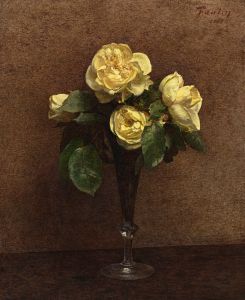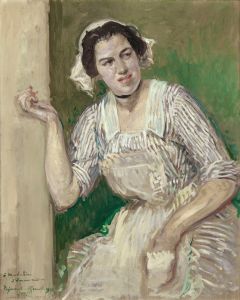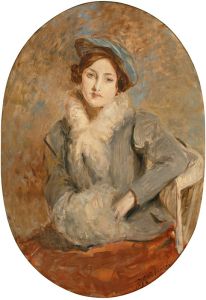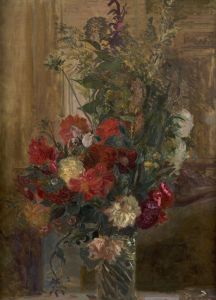
Dahlias et capucines à l’urne d’argent
A hand-painted replica of Jacques-Émile Blanche’s masterpiece Dahlias et capucines à l’urne d’argent, meticulously crafted by professional artists to capture the true essence of the original. Each piece is created with museum-quality canvas and rare mineral pigments, carefully painted by experienced artists with delicate brushstrokes and rich, layered colors to perfectly recreate the texture of the original artwork. Unlike machine-printed reproductions, this hand-painted version brings the painting to life, infused with the artist’s emotions and skill in every stroke. Whether for personal collection or home decoration, it instantly elevates the artistic atmosphere of any space.
Jacques-Émile Blanche's painting Dahlias et capucines à l’urne d’argent is a work by the French artist, who is best known for his portraits of prominent cultural figures of the late 19th and early 20th centuries. Blanche (1861–1942) was a prolific painter, writer, and cultural commentator, and his works often reflect his connections to the literary and artistic circles of his time. While he is primarily recognized for his portraiture, he also created still lifes and other genres of painting, including this piece.
The title of the painting, which translates to Dahlias and Nasturtiums in the Silver Urn, suggests a focus on floral arrangement, a common subject in still life painting. The work likely depicts a carefully composed bouquet of dahlias and nasturtiums placed in a silver urn, showcasing Blanche's skill in rendering texture, color, and light. The use of a silver urn as the central vessel adds an element of elegance and refinement to the composition, reflecting the artist's interest in capturing both the beauty of natural forms and the sophistication of decorative objects.
Blanche's artistic style was influenced by both Impressionism and the academic traditions of the 19th century, and his works often demonstrate a balance between spontaneity and careful composition. In Dahlias et capucines à l’urne d’argent, this balance may be evident in the interplay of vibrant floral colors and the reflective surface of the silver urn. The painting likely exemplifies Blanche's ability to convey a sense of atmosphere and mood, even in a still life setting.
As with many of Blanche's works, this painting reflects the artist's connections to the cultural milieu of his time. Born into a wealthy family, Blanche was exposed to art and literature from an early age, and he maintained friendships with figures such as Marcel Proust, André Gide, and James Joyce. While his portraits often capture the personalities of his sitters, his still lifes, such as Dahlias et capucines à l’urne d’argent, reveal his sensitivity to form, color, and composition.
The exact date of creation for this painting is not widely documented, nor is its current location or ownership. However, it is consistent with Blanche's broader body of work, which spans several decades and includes a variety of subjects. The painting serves as an example of his versatility as an artist and his ability to work across different genres with equal skill.
Further details about this specific painting, including its provenance and exhibition history, are not readily available in public records.










